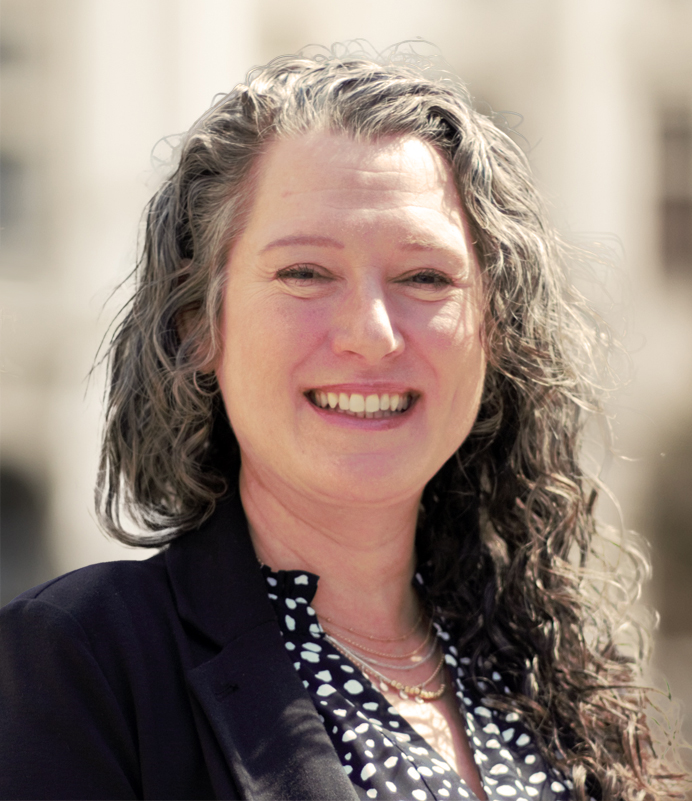A seven-minute walk separates Kensington High School and Liguori Academy, two high schools serving the East Kensington neighborhood of northeast Philadelphia.
Kensington and Liguori have a few things in common. Both schools serve diverse populations—92 percent and 70 percent of which are students of color, respectively.
Both student bodies demonstrate significant financial need. All Kensington students qualify for free and reduced lunch, while all Liguori students qualify for and receive needs-based scholarships.
However, despite these similarities and proximity, these schools are worlds apart.
At Kensington, 82 percent are chronically absent. Only 3 percent and 19 percent of Kensington students can perform math and read at grade level, respectively. Only 23 percent of Kensington students enroll in college.
Meanwhile, Liguori students graduate far better prepared for life. All Liguori students gain college admissions, and 65 percent enroll in college. All students also receive firsthand, real-world experience through service learning and internships.
The Kensington-Liguori comparison may seem apples-to-oranges. Indeed, the first is a public school, the second private.
Nevertheless, how can two schools in the same neighborhood result in such a wide chasm of outcomes? What is the difference maker that empowers Liguori students to excel over their Kensington peers?
For starters, Pennsylvania’s tax-credit scholarship programs—the Educational Improvement Tax Credit (EITC) and Opportunity Scholarship Tax Credit (OSTC)—have a tremendous impact. EITC and OSTC offer more than $630 million to tens of thousands of students annually, providing educational choice to students, especially those in marginalized communities.
Like many private schools, Liguori relies on EITC and OSTC funding to financially support its students. In the 2023–24 school year, Liguori awarded $308,750 in EITC and OSTC scholarships. Moreover, Liguori turns no student away for financial need and offers four scholarships in addition to EITC and OSTC.
Research proves these scholarships are worth the investment.
Most notably, EITC and OSTC scholarships yield improved academic outputs.
The Children’s Scholarship Fund Philadelphia (CSFP), one of the largest Pennsylvania-based scholarship organizations handling EITC and OSTC funds, commissioned a report showing that their scholarship recipients outperform their peers academically. The report, researched and developed by an independent third party, shows more than half of CSFP seventh graders score at or above proficiency in math and reading, compared to 19 percent and 38 percent of Philadelphia school district students, respectively. Moreover, CSFP students even outperform their private school peers, according to the analysis.
A newly released report, Pennsylvania’s Education Tax Credit Scholarships: How EITC Serves Children and Families in the Commonwealth, underlines this research finding that tax credit scholarship recipients routinely graduate and matriculate to college at higher rates than their public school peers.
This academic success generates better economic opportunities for these students in the future. An earlier study (coauthored by the Reason Foundation and the Commonwealth Foundation) found that the EITC and OSTC programs produced $1.6 billion in higher lifetime earnings for current recipients.
This economic impact benefits some of Pennsylvania’s most vulnerable. An Independent Fiscal Office report shows seven out of ten scholarships go toward students in households making 185 percent of the federal poverty level. The average household income for CSFP students is $44,827—nearly 40 percent lower than the statewide median. Low- and middle-income families could not afford a private education without these scholarship programs.
Continuing to expand these programs is critical to Pennsylvania’s underserved students. For the 2024–25 fiscal year, Pennsylvania lawmakers approved a $75 million increase, which will enable another 55,000 students to receive EITC and OSTC scholarships in the coming school year.
Yet, despite these increases, demand continues to outpace supply. Arbitrary caps still wait-list tens of thousands of Pennsylvania students.
To ease the waiting list, lawmakers could pass legislation that automatically increases the caps by 25 percent when scholarship organizations claim 90 percent of existing tax credits. Doing so would depoliticize the issue and safeguard scholarships from annual budget battles.
Strengthening these scholarship programs helps Pennsylvania fulfill its constitutional obligation to provide all students with—as the Commonwealth Court ruled—“a meaningful opportunity to succeed academically, socially, and civically.”
Without EITC or OSTC, Pennsylvania’s most vulnerable kids—such as those living in East Kensington—will not have that meaningful opportunity to succeed.


